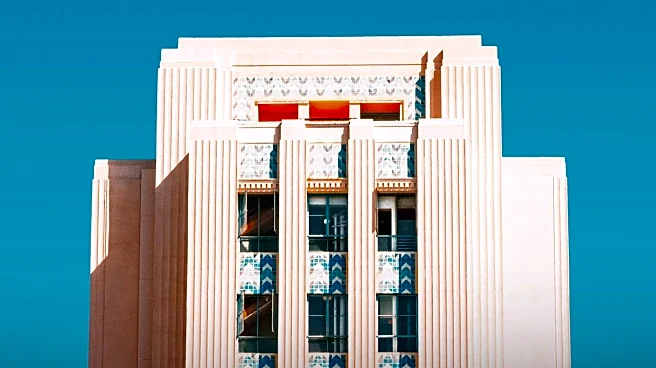What's Happening?
During the 1930s, Los Angeles faced significant challenges, including economic collapse, natural disasters, and political corruption. Despite these adversities, the city managed to construct some of its most iconic architectural landmarks. Notable buildings from this era include the Pantages Theatre, Griffith Observatory, and Union Station. The decade began with the Great Depression, which severely impacted construction and employment, with unemployment rates reaching 28% in 1932. The city also hosted the 1932 Summer Olympics, which, despite drawing a large crowd, saw fewer athletes compared to previous Games. Natural disasters such as the Long Beach earthquake in 1933 and major floods in 1934 and 1938 further tested the city's resilience. These events led to significant infrastructure developments, including the construction of Hansen Dam and the concrete channeling of the Los Angeles River. The film industry, a key part of the city's identity, also evolved during this time, with the introduction of color films and major blockbusters like 'Gone With the Wind' and 'The Wizard of Oz'.
Why It's Important?
The architectural developments of the 1930s in Los Angeles are significant as they reflect the city's ability to adapt and thrive despite facing severe economic and environmental challenges. These buildings not only serve as historical landmarks but also symbolize the resilience and innovation of the city's inhabitants during a tumultuous period. The infrastructure improvements, such as the concrete channeling of the Los Angeles River, highlight the city's proactive measures to mitigate future disasters. Additionally, the evolution of the film industry during this time contributed to Los Angeles' reputation as a cultural and entertainment hub, influencing global cinema. The architectural styles of the era, including Art Deco and Streamline Moderne, continue to influence modern design, showcasing the lasting impact of this period on the city's cultural and aesthetic landscape.
What's Next?
As Los Angeles continues to grow and evolve, the preservation and repurposing of these historical buildings remain a priority for city planners and historians. Efforts to maintain the architectural integrity of these landmarks while adapting them for modern use are ongoing. The city's experience in overcoming past challenges may inform current strategies in addressing contemporary issues such as climate change and urban development. The lessons learned from the 1930s could guide future infrastructure projects and disaster preparedness plans, ensuring that Los Angeles remains resilient in the face of new challenges.
Beyond the Headlines
The architectural achievements of the 1930s in Los Angeles offer insights into the cultural and social dynamics of the era. The buildings serve as a testament to the city's ability to innovate and adapt, reflecting broader themes of resilience and transformation. The preservation of these landmarks not only honors the city's history but also provides educational opportunities for future generations to learn about the impact of historical events on urban development. The integration of these historical sites into the city's modern landscape highlights the importance of balancing heritage conservation with contemporary needs.










